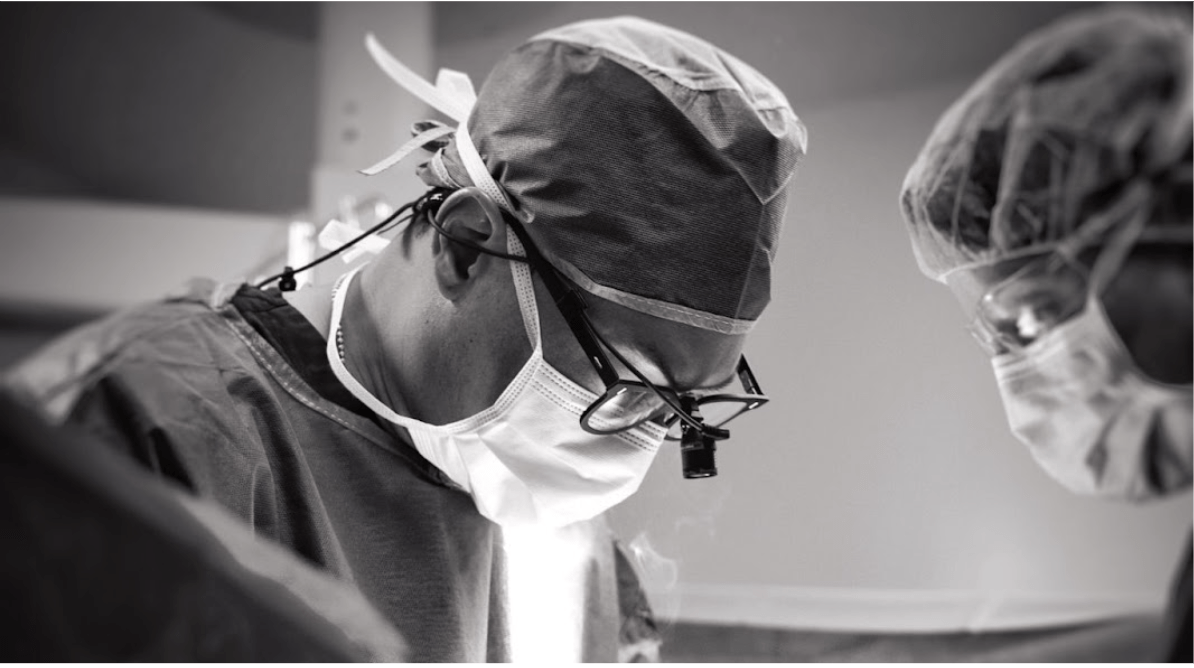Health
Inside Dr. James Lee’s Surgical Suite: A Look at Gynecomastia Correction

Byline: Katreen David
“Cosmetic surgery is no longer about extremes; it’s about harmonizing your outer self with the person you’ve always known yourself to be,” says Dr. James Lee, reflecting on the industry’s evolving standards for both men and women. “In recent years, we’ve seen a gravitation toward subtle enhancements that speak to individual authenticity rather than transformation for the sake of it.”
Procedures such as gynecomastia correction are a barometer of the times. It captures society’s dynamic views on beauty, self-expression, and, increasingly, the desire for authenticity.
Gynecomastia correction is a procedure designed to address the excessive development of male breast tissue, a condition that can cause emotional distress and a deep sense of self-consciousness for many men. Gynecomastia is more than a cosmetic issue. It stems from various causes—hormonal imbalances, obesity, genetics, or even the side effects of medication. For numerous men, surgery is the final step after years of struggle with their body image.
“I’ve had patients tell me they haven’t been to the beach in years or that they wear multiple layers of clothing just to feel comfortable,” Dr. Lee explains. “It’s not just about how they look, but how they feel about themselves.”
The surgical suite of Dr. James Lee, a leading figure in the plastic surgery industry, makes ripples in this respect. His practice is a safe space where progressive techniques meet state-of-the-art technology, offering clients subtle amplifications that make them feel secure, comfortable, and welcome in his practice.
Precision Meets Compassion in the Operating Room
For Dr. Lee, each gynecomastia surgery is a blend of art and science, involving the removal of excess fat, glandular tissue, and, in some cases, skin. He uses a combination of liposuction and excision techniques, depending on the patient’s needs. Small incisions are carefully placed in inconspicuous areas, often around the nipple or lateral chest, to minimize scarring.
“The goal is to restore a natural, masculine contour to the chest while minimizing any visible signs of surgery,” says Dr. Lee. His steady hands reflect years of experience and dedication to delivering results that are both physically transformative and emotionally freeing.
Patients, typically, undergo the procedure under local anesthesia with sedation, though some opt for general anesthesia. The operation itself may take a couple of hours, but the impact on the patient’s life can be immeasurable.
It is worth noting that, in Dr. Lee’s practice, the procedure doesn’t end in the operating room. Instead, it is the beginning of a recovery process designed to render the best possible results.
“We take the time to walk patients through every step of recovery,” he says. “From wearing compression garments to controlling swelling, everything is about ensuring the final result meets their expectations.”
Patients leave the clinic the same day, albeit with detailed post-operative instructions that extend beyond healing. For Dr. Lee, success is measured by physical results, the patients’ trust in him, and their satisfaction with their newfound confidence as they recover and return to their daily lives.
The Psychological Toll of Gynecomastia
Gynecomastia affects more than just the physical appearance. A multitude of men experience a profound impact on their self-esteem and mental well-being. As Dr. Lee notes, “Some men live with this condition for years, feeling trapped in their bodies and avoiding social activities, sports, or even intimacy because of how they feel about their chest.”
In a society where male body image issues are often overlooked, Dr. Lee’s practice is a safe space where men can openly discuss their struggles. He frequently hears stories from patients who have been ridiculed or who have suffered in silence, feeling isolated because of a condition that is rarely talked about.
However, once they have the surgery, the change in their demeanor is almost immediate. “It’s like watching a weight being lifted off their shoulders,” says Dr. Lee. “They carry themselves differently, with more confidence. It’s not just a physical transformation; it’s an emotional one as well.”
Dr. Lee understands the sensitivity surrounding gynecomastia correction and has tailored his approach to meet both the physical and emotional needs of his patients. Each consultation is an opportunity for him to listen and guide his patients through the decision-making process, ensuring they have realistic expectations and understand the nuances of the surgery.
Dr. Lee’s reputation for gynecomastia correction has earned him praise in the medical community and gratitude from countless patients. As body image issues among men continue to gain recognition, his work shines a light on the importance of offering solutions that go beyond the surface.
Beauty Rewired: High-Tech, Heartfelt Transformations
One of the hallmarks of Dr. James Lee’s practice is his meticulous work in the operating room and the exceptional team providing outstanding service by his side.
Dr. Lee is acutely aware of the importance of balancing technology with the indispensable human touch. “Technology is an incredible tool, but it’s not a replacement for the surgeon’s proficiency and intuition. My job is to guide my patients and help them understand what’s possible and realistic,” he says. His mantra resonates with a growing demographic of patients seeking reassurance and innovation in equal measure.
The Road Ahead: Ethical and Aesthetic Considerations
As the industry evolves, ethical considerations are increasingly coming to the forefront. The rise of social media has fueled unrealistic beauty standards, leading to an uptick in procedures among younger demographics. This has prompted a debate within the industry about the role of cosmetic surgery in perpetuating certain ideals.
“We have a responsibility as surgeons to ensure that our work doesn’t contribute to a culture of unattainable beauty,” Dr. James Lee emphasizes. “We have to focus on enhancing what’s already there, not creating something that isn’t. Patients should feel empowered, not pressured, by the available options.”
Top-tier surgeons are increasingly adopting this ethical stance as they recognize the impact of their work on both individual lives and vast societal standards.
Where Beauty Meets Brains: Crafting Aesthetic Integrity in the Modern Age
As we move further into 2024, it’s clear that the field of cosmetic surgery is undergoing a significant transformation—one that prioritizes authenticity, patient well-being, and ethical responsibility.
Dr. James Lee is one of the forward-thinking minds propelling this movement to new heights. He effectively leads the way with innovative techniques and a commitment to natural, individualized results. “The future of cosmetic surgery isn’t about keeping up with trends; it’s about understanding what makes each person unique and enhancing that essence,” he concludes.
Responding to the critics who typecast the beauty industry as a superficial field, Dr. James Lee’s plastic surgery clinic offers a refreshing perspective. It values subtlety over spectacle and integrity over imitation. This is the essence of gynecomastia correction and every other careful procedure that Dr. Janes Lee performs.
As the demand for these kinds of results grows, so does the importance of practitioners who can deliver them with skill and sensitivity. Dr. James Lee’s practice is a game-changer in this new era, where technology and artistry meet to create something truly remarkable: your most authentic version.
Health
Best Times to Take Whey Protein Isolate for Optimal Results

For anyone looking to build muscle, recover faster, or simply improve their overall nutrition, timing can make a big difference when it comes to protein intake. Whey protein isolate is one of the most efficient and bioavailable sources of protein available — easily absorbed by the body and ideal for supporting recovery and growth. Whether you’re a seasoned athlete or just starting your fitness journey, knowing the best times to take it can help you make the most of its benefits. If you’re looking for a high-quality option, explore premium whey protein isolate in Australia to fuel your results.
1. Post-Workout: The Prime Time for Recovery
The period immediately after your workout is arguably the best time to consume whey protein isolate. During exercise, your muscles experience micro-tears and deplete their glycogen stores. Consuming whey protein isolate within 30 minutes post-training provides your body with fast-digesting amino acids, which help repair muscle tissue and stimulate protein synthesis.
Pairing your shake with a source of carbohydrates can further enhance recovery by replenishing glycogen stores and promoting better nutrient absorption.
2. First Thing in the Morning
After several hours of sleep, your body wakes up in a fasted state. Consuming whey protein isolate in the morning helps prevent muscle breakdown and kickstarts your metabolism for the day. It’s particularly useful if you don’t have time for a full breakfast or if you train early in the morning.
This quick, easily digestible protein gives your muscles a readily available source of amino acids to maintain muscle mass and energy levels throughout the morning.
3. Between Meals to Support Protein Intake
If you struggle to meet your daily protein goals through food alone, taking whey protein isolate between meals is a simple way to boost your intake. This is especially beneficial for those aiming to build lean muscle or lose fat while maintaining muscle mass.
A mid-morning or mid-afternoon shake helps stabilise blood sugar levels and reduces the temptation to reach for less nutritious snacks.
4. Before Bed (When Needed)
While casein protein is traditionally recommended for nighttime use due to its slow digestion, whey protein isolate can also be beneficial before bed in certain cases — particularly for those who train late in the evening or need additional daily protein intake.
Although it digests quickly, it still provides your muscles with amino acids to support repair and recovery during the early stages of sleep.
Optimising Your Protein Strategy
Ultimately, the best time to take whey protein isolate depends on your fitness goals, training schedule, and dietary habits. The most important thing is to ensure you’re consistently meeting your total daily protein needs. Whey protein isolate’s versatility makes it easy to integrate into your lifestyle — from breakfast smoothies to post-workout shakes.
-

 Tech5 years ago
Tech5 years agoEffuel Reviews (2021) – Effuel ECO OBD2 Saves Fuel, and Reduce Gas Cost? Effuel Customer Reviews
-

 Tech6 years ago
Tech6 years agoBosch Power Tools India Launches ‘Cordless Matlab Bosch’ Campaign to Demonstrate the Power of Cordless
-

 Lifestyle6 years ago
Lifestyle6 years agoCatholic Cases App brings Church’s Moral Teachings to Androids and iPhones
-

 Lifestyle5 years ago
Lifestyle5 years agoEast Side Hype x Billionaire Boys Club. Hottest New Streetwear Releases in Utah.
-

 Tech7 years ago
Tech7 years agoCloud Buyers & Investors to Profit in the Future
-

 Lifestyle5 years ago
Lifestyle5 years agoThe Midas of Cosmetic Dermatology: Dr. Simon Ourian
-

 Health7 years ago
Health7 years agoCBDistillery Review: Is it a scam?
-

 Entertainment6 years ago
Entertainment6 years agoAvengers Endgame now Available on 123Movies for Download & Streaming for Free
